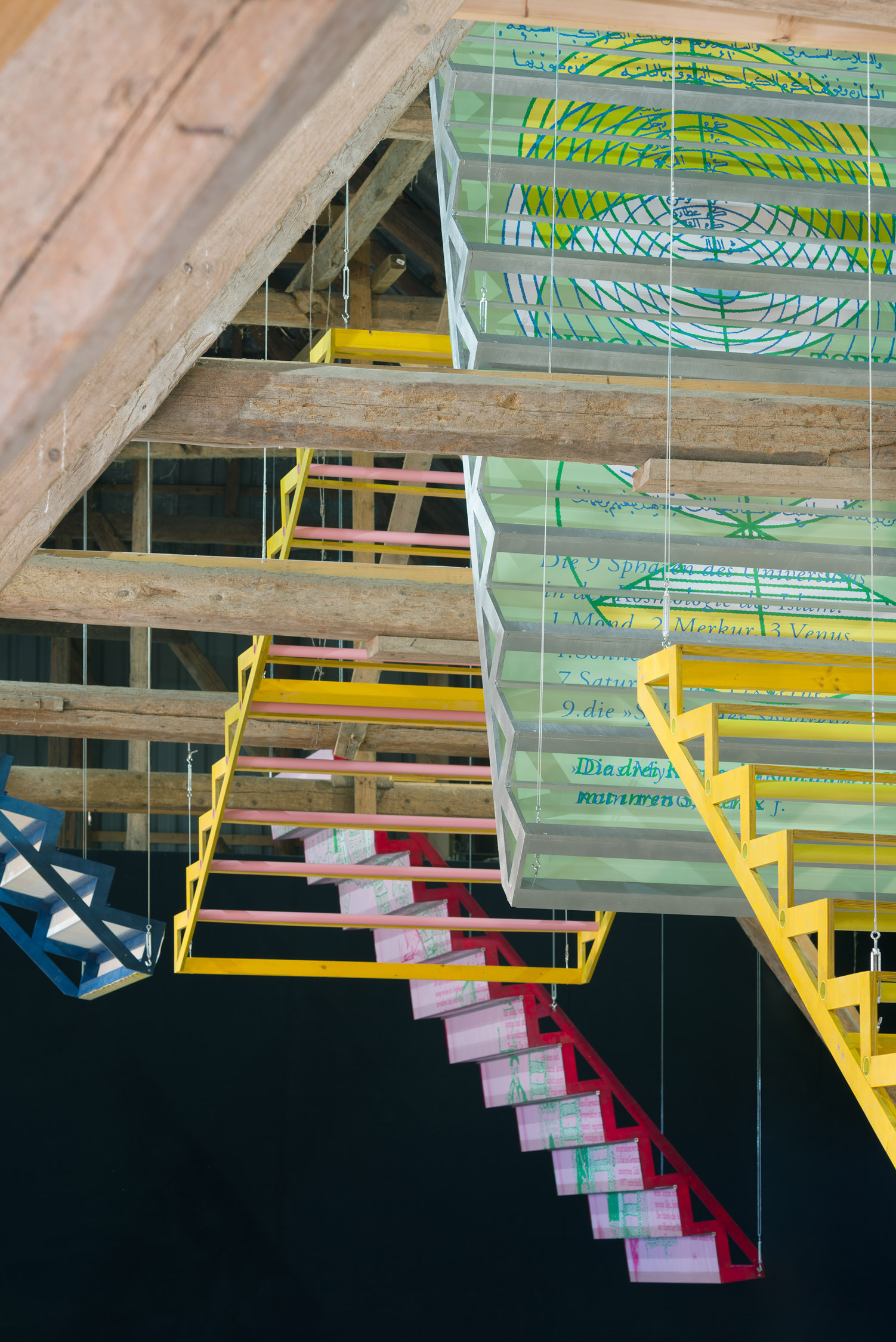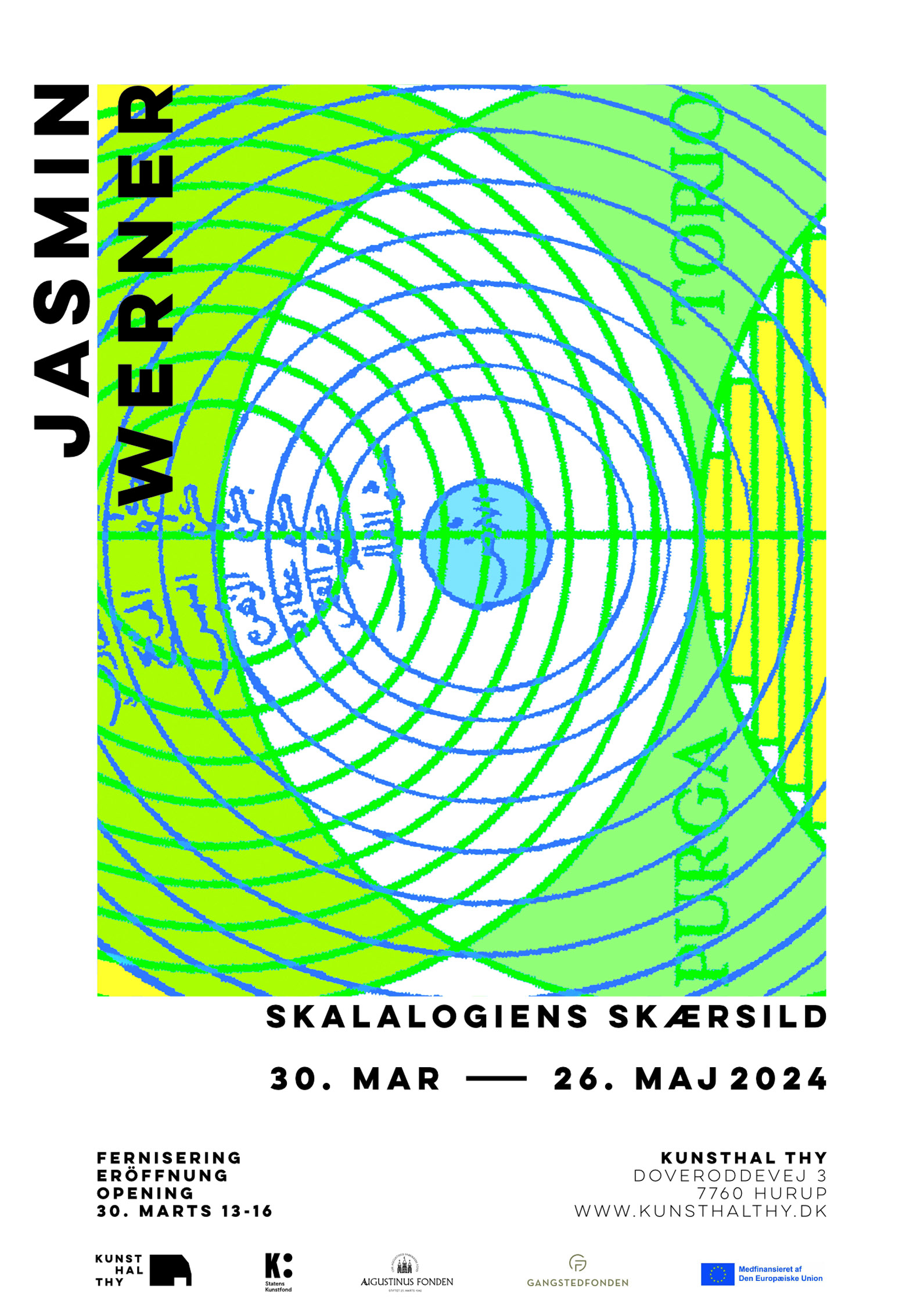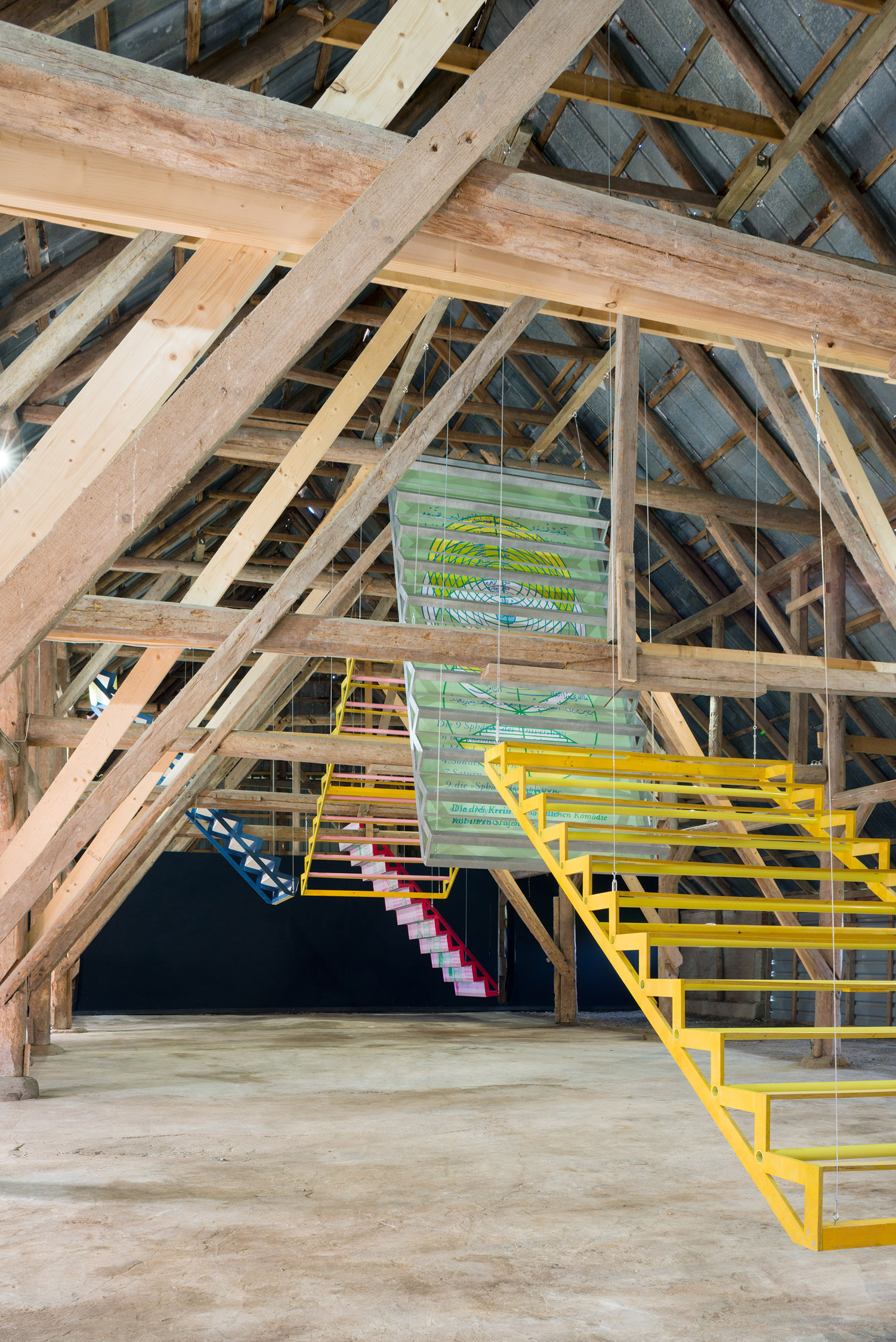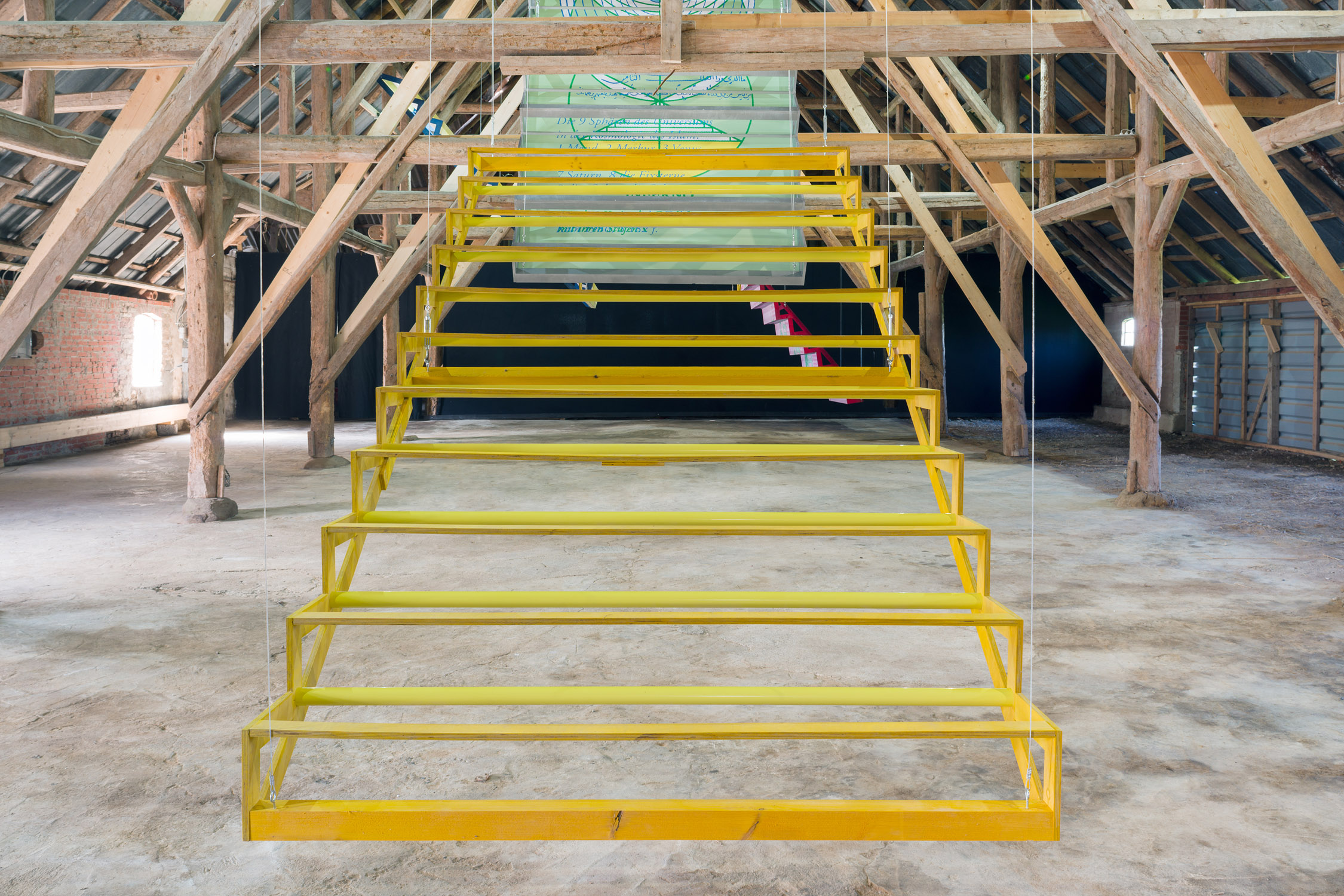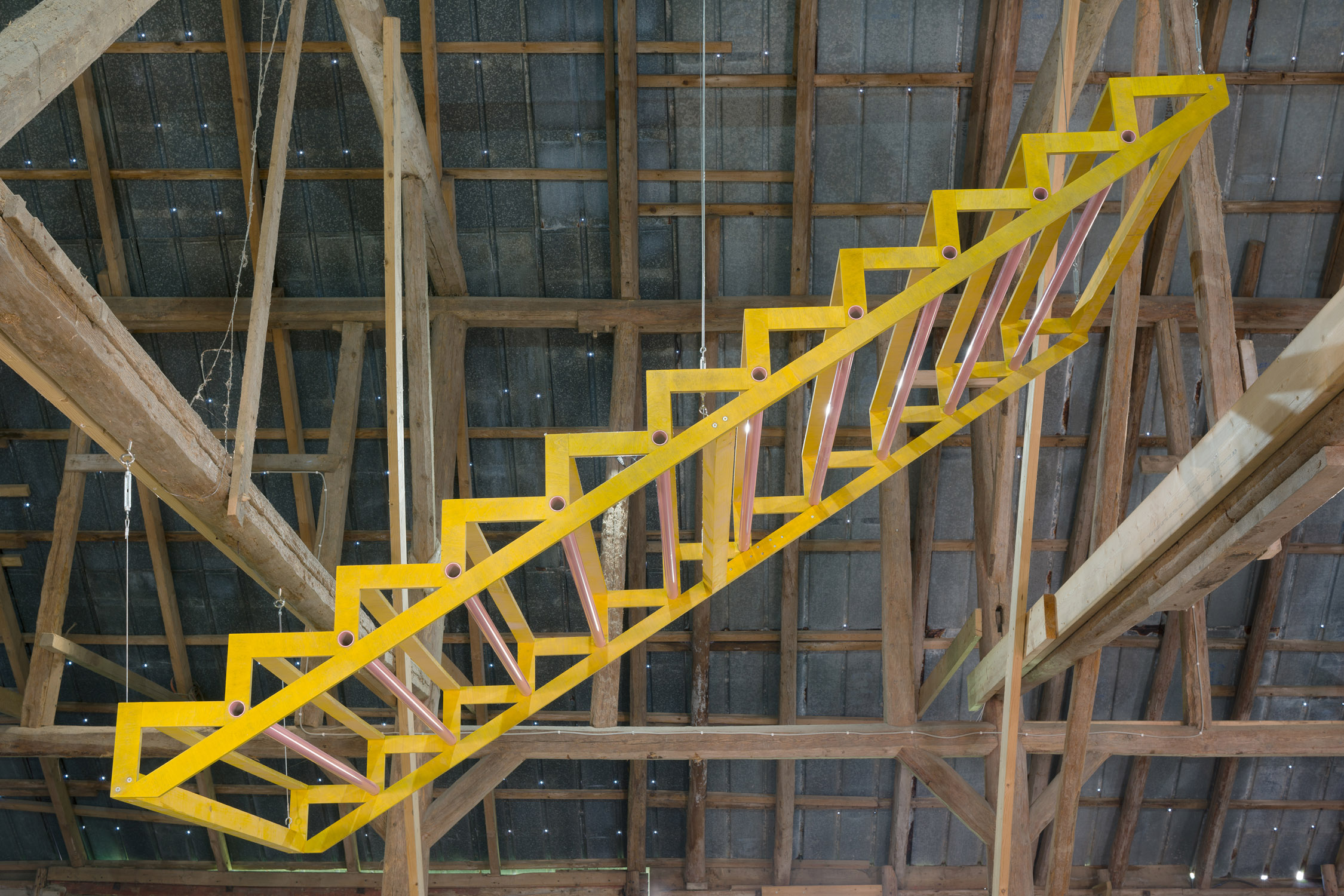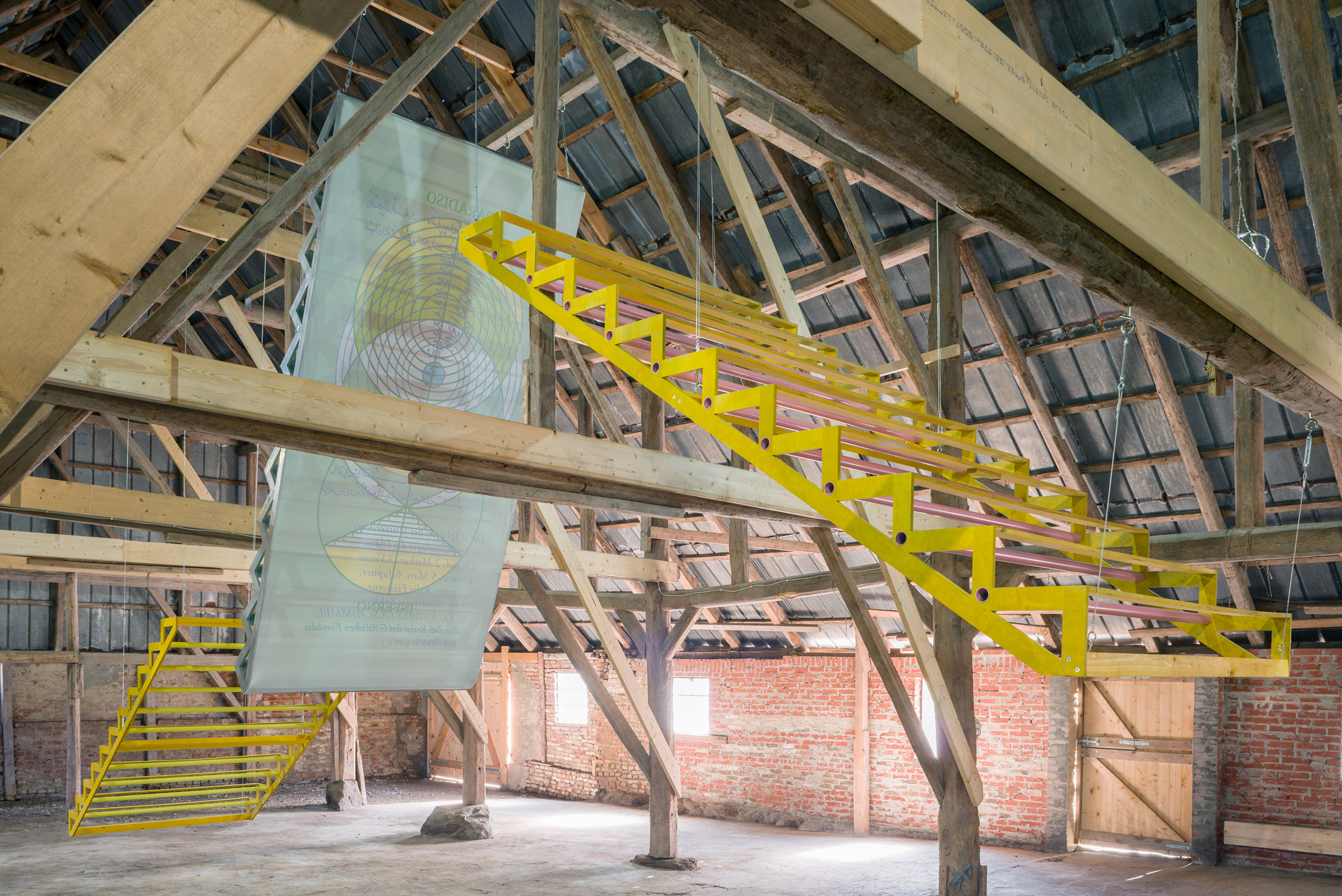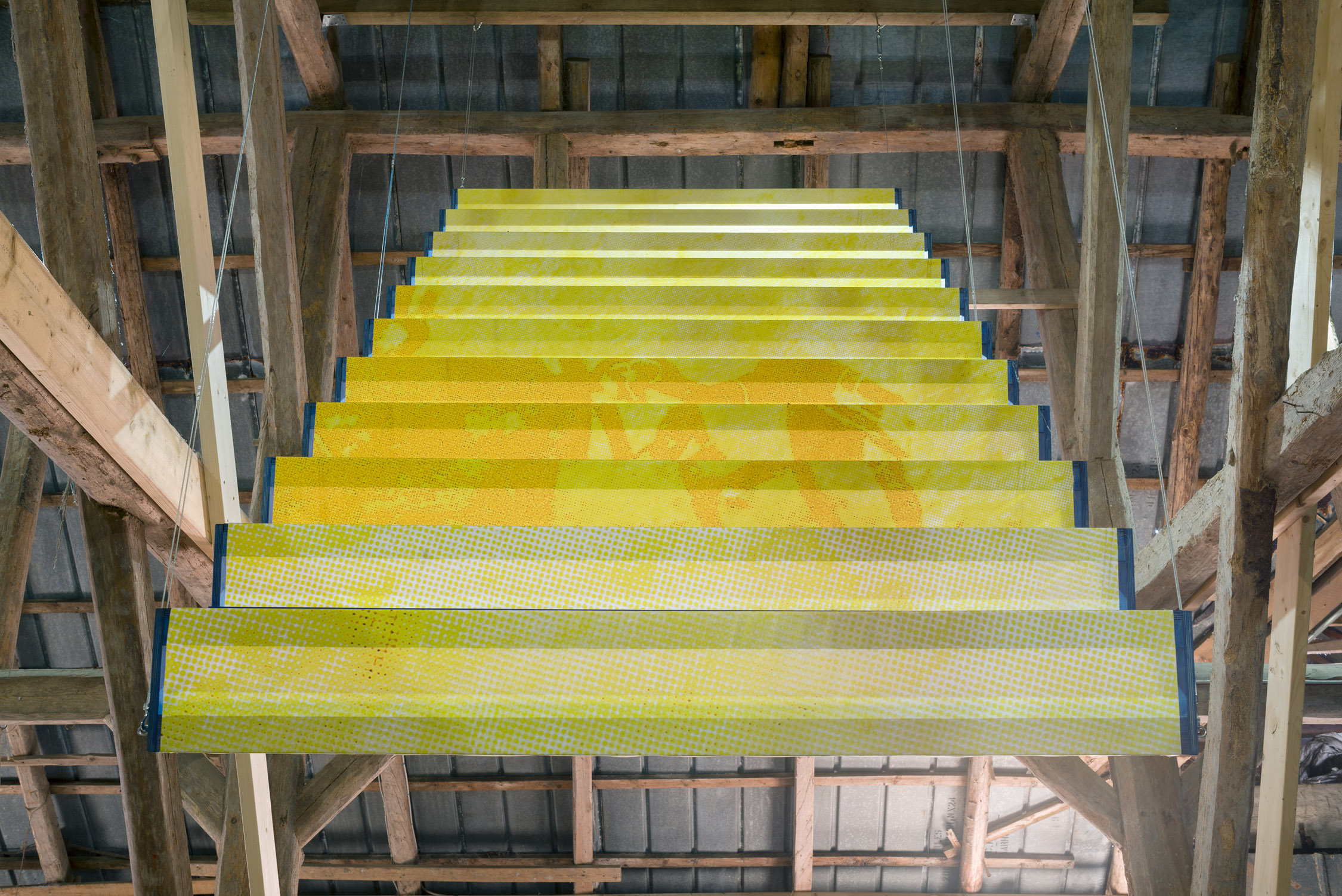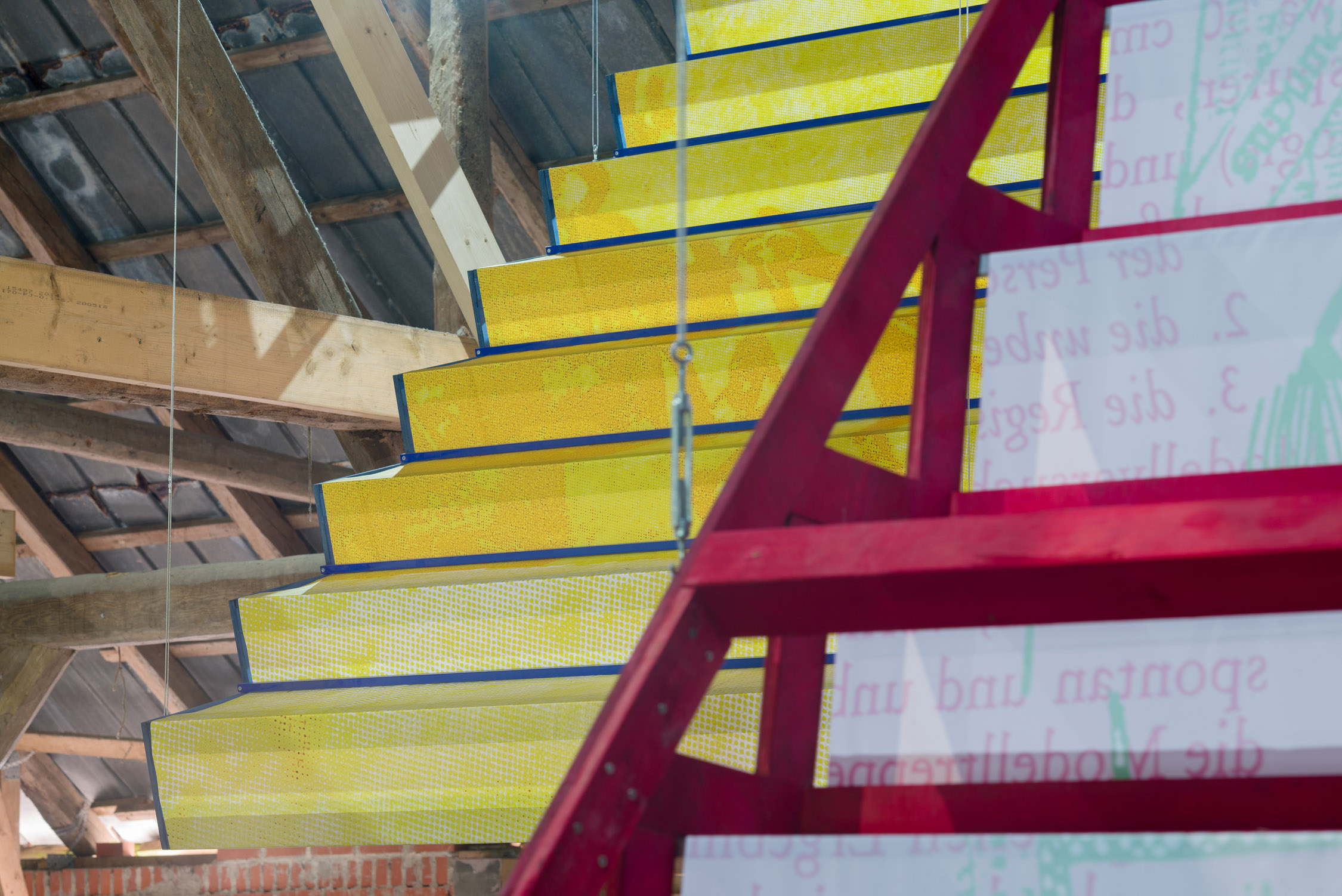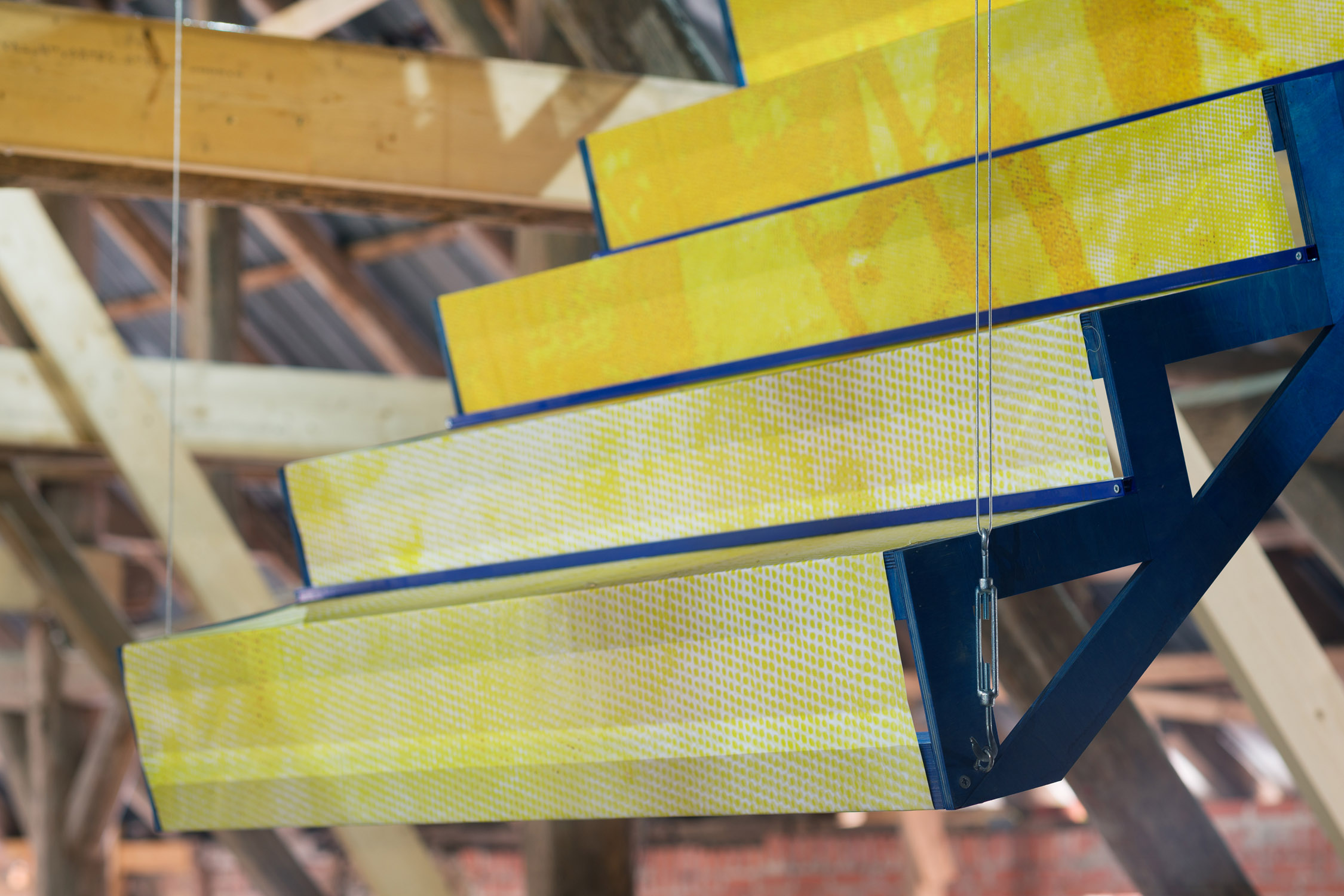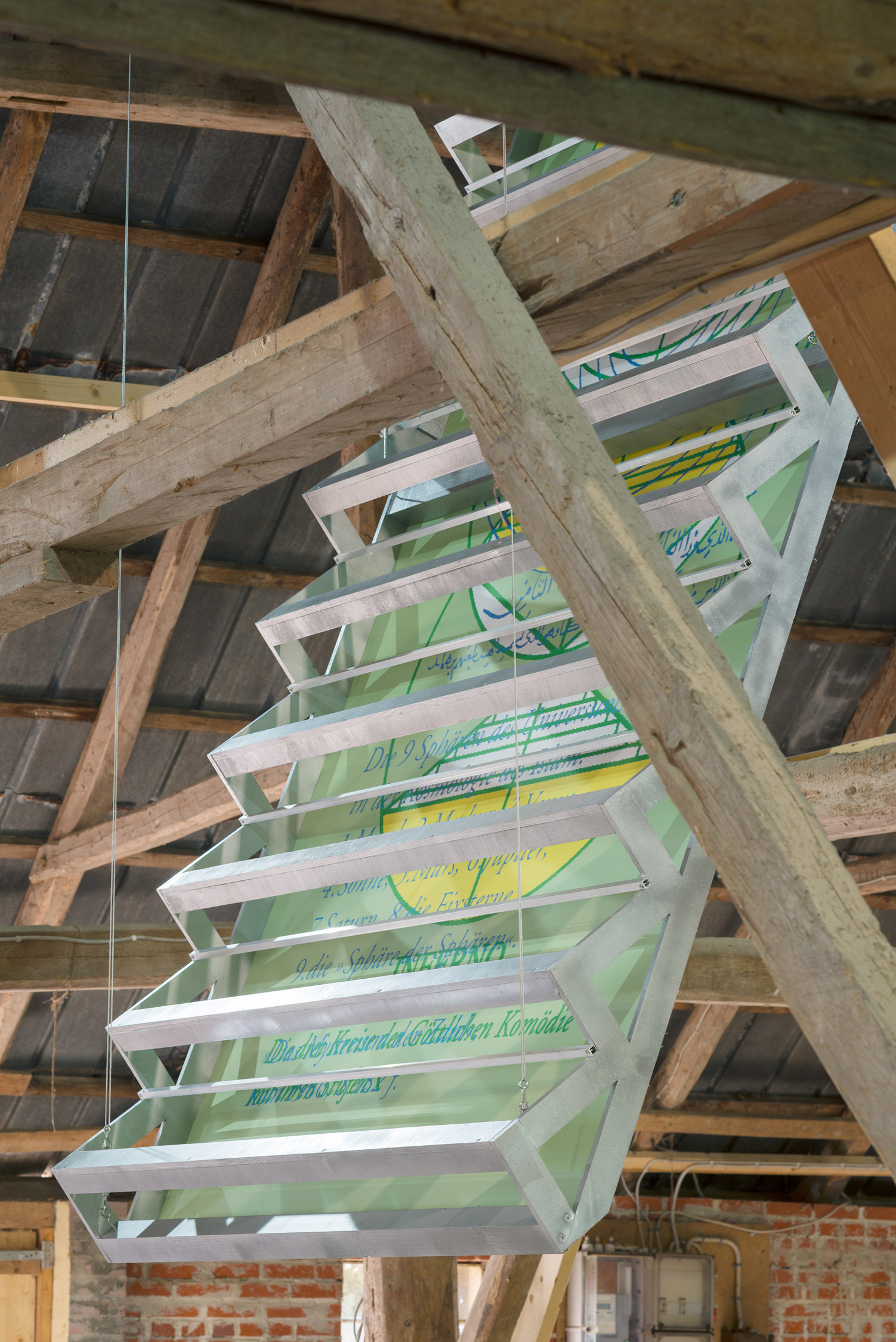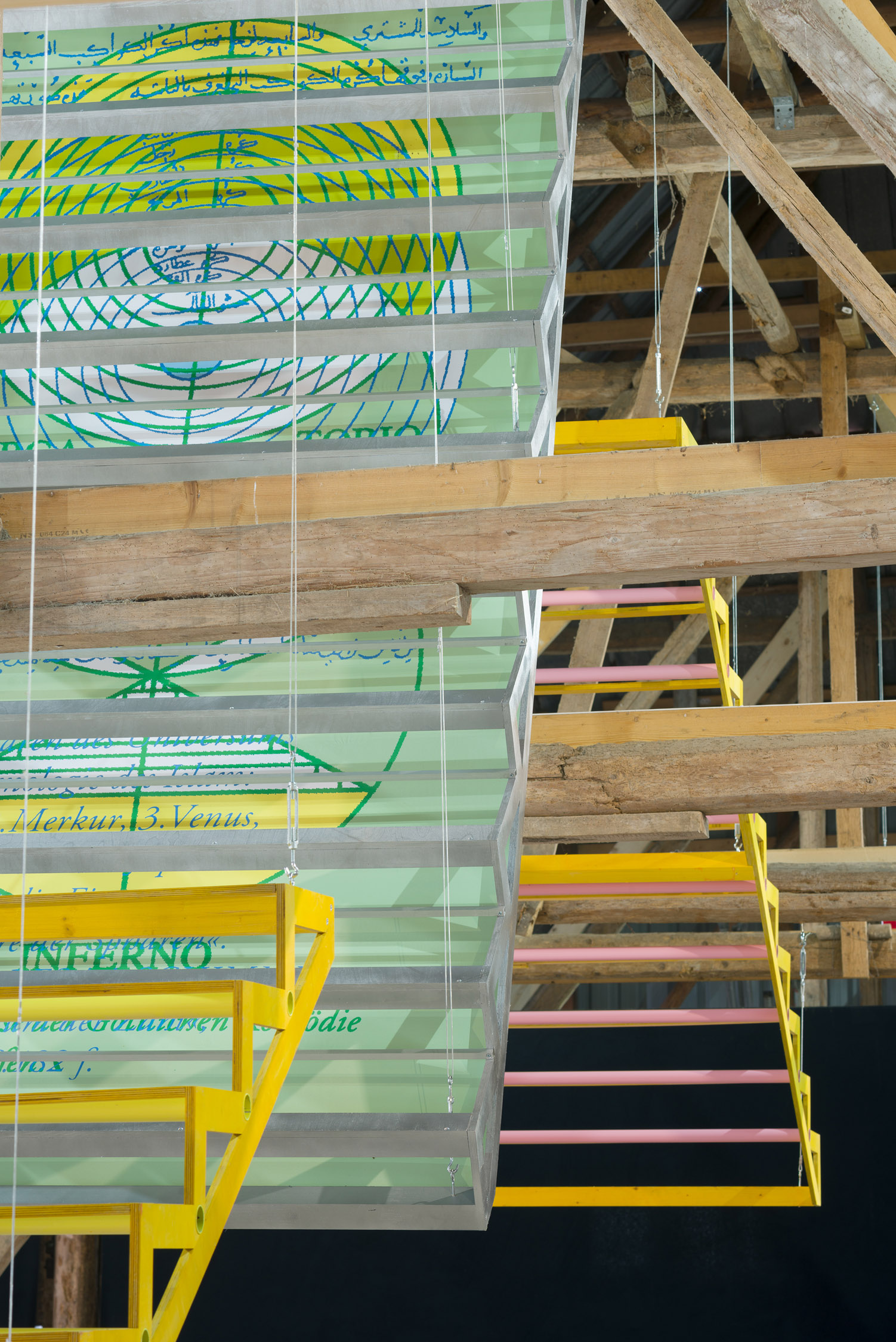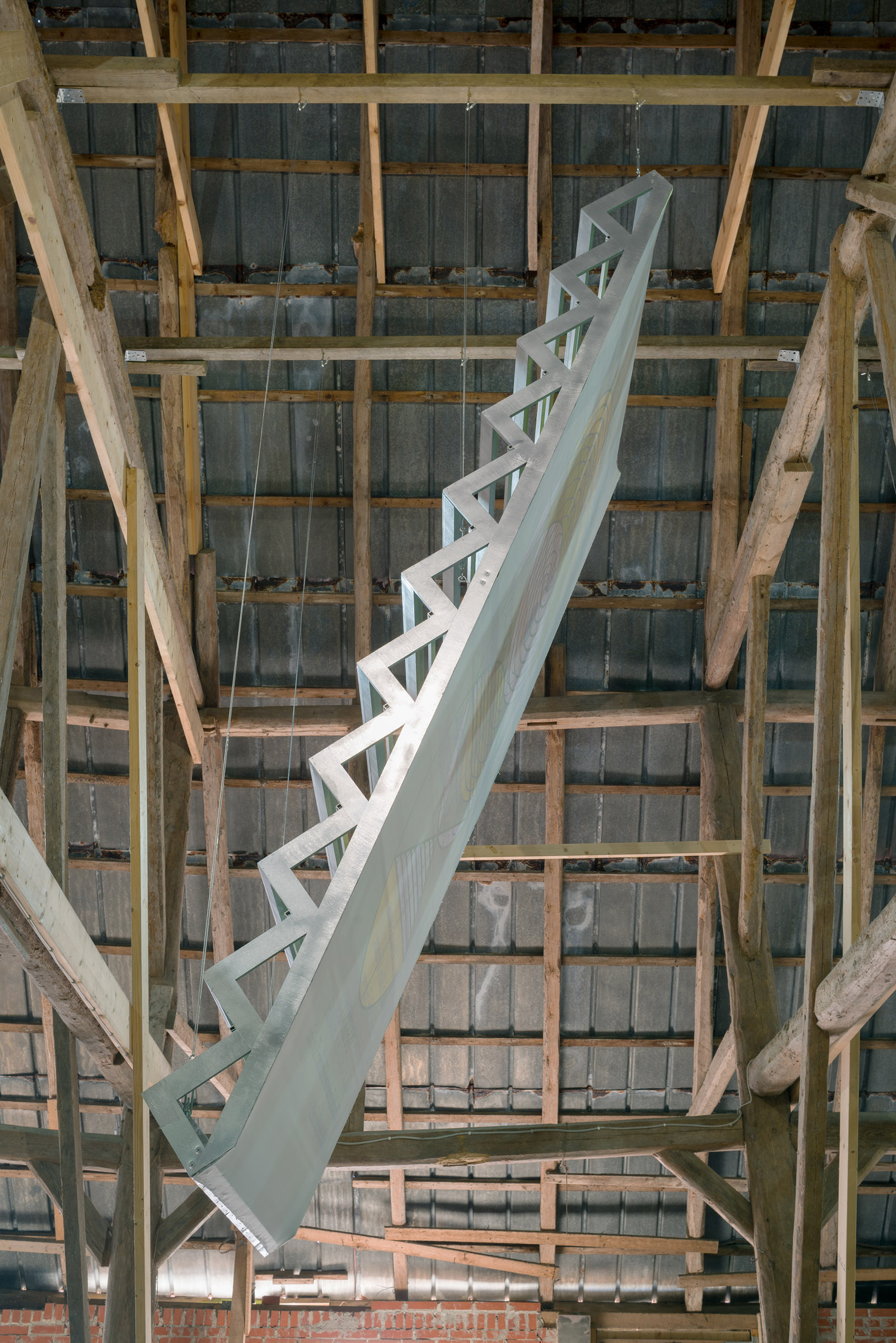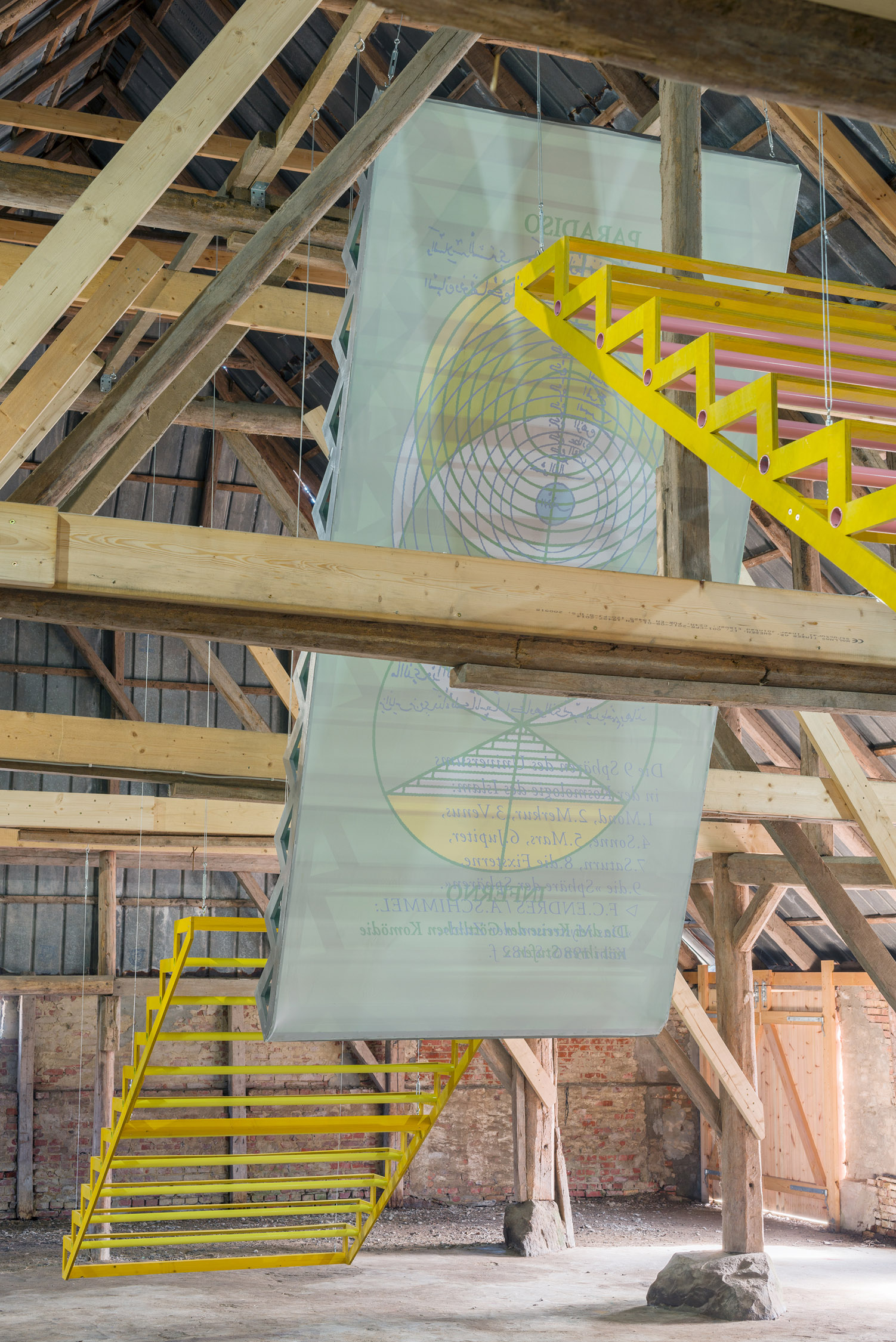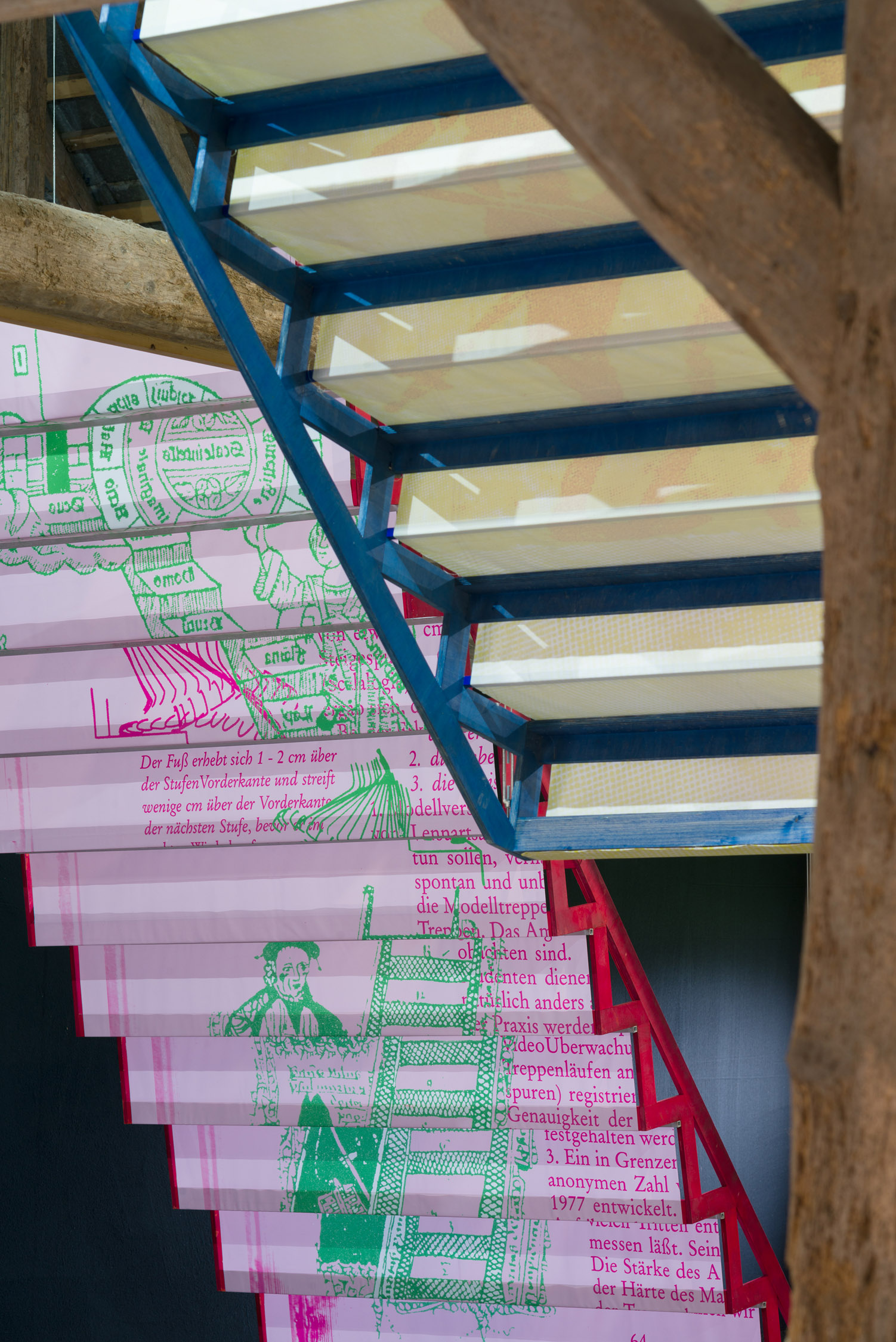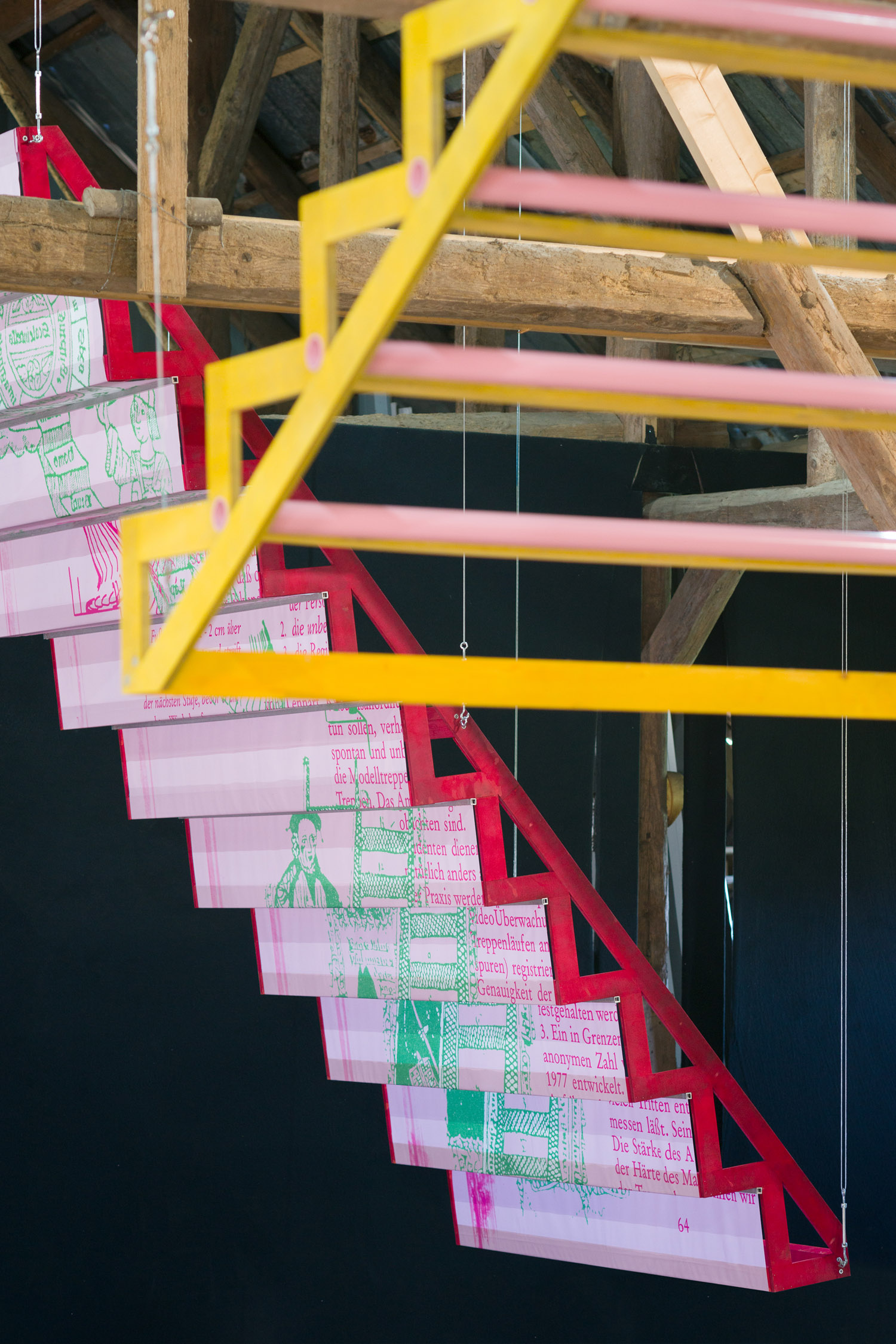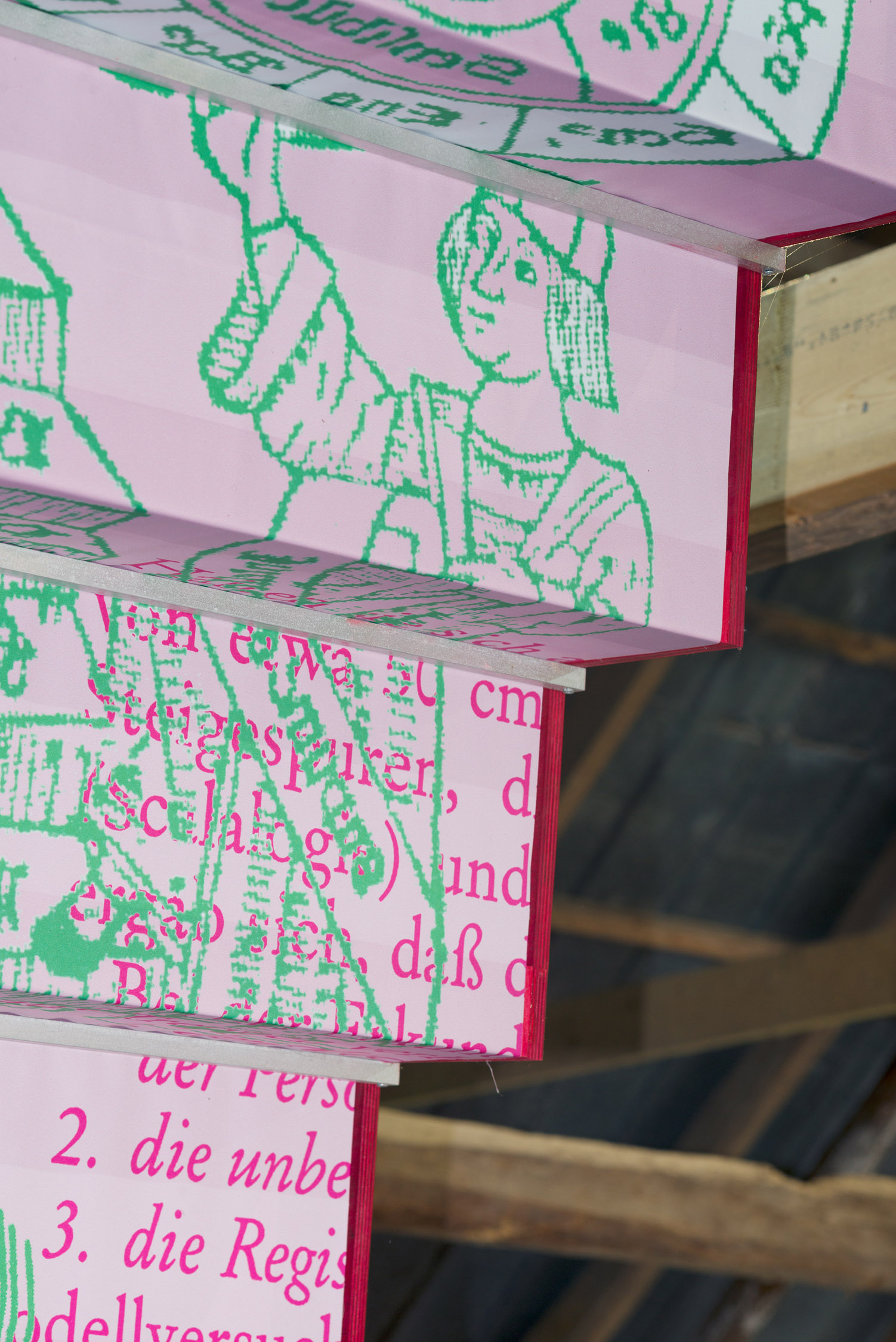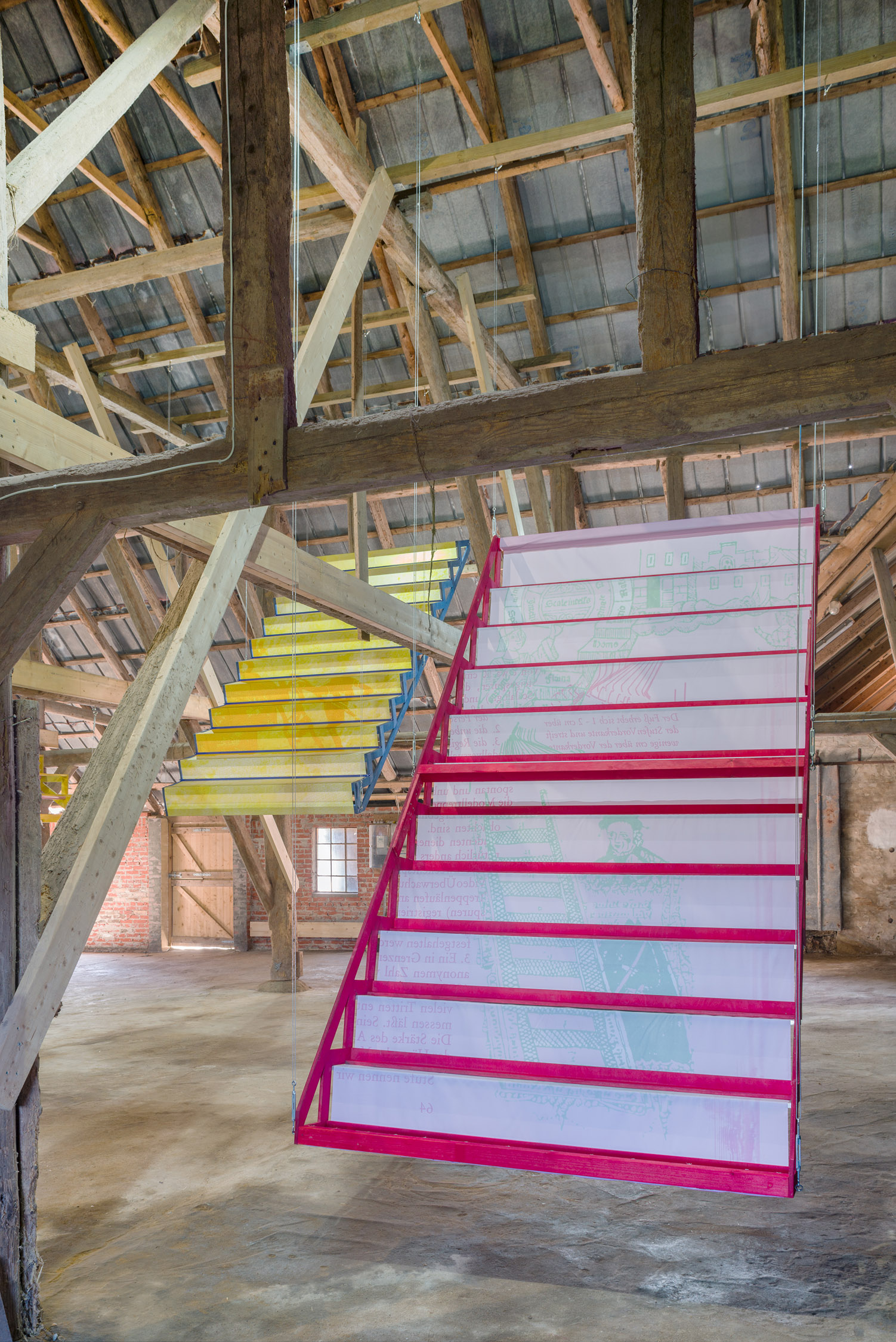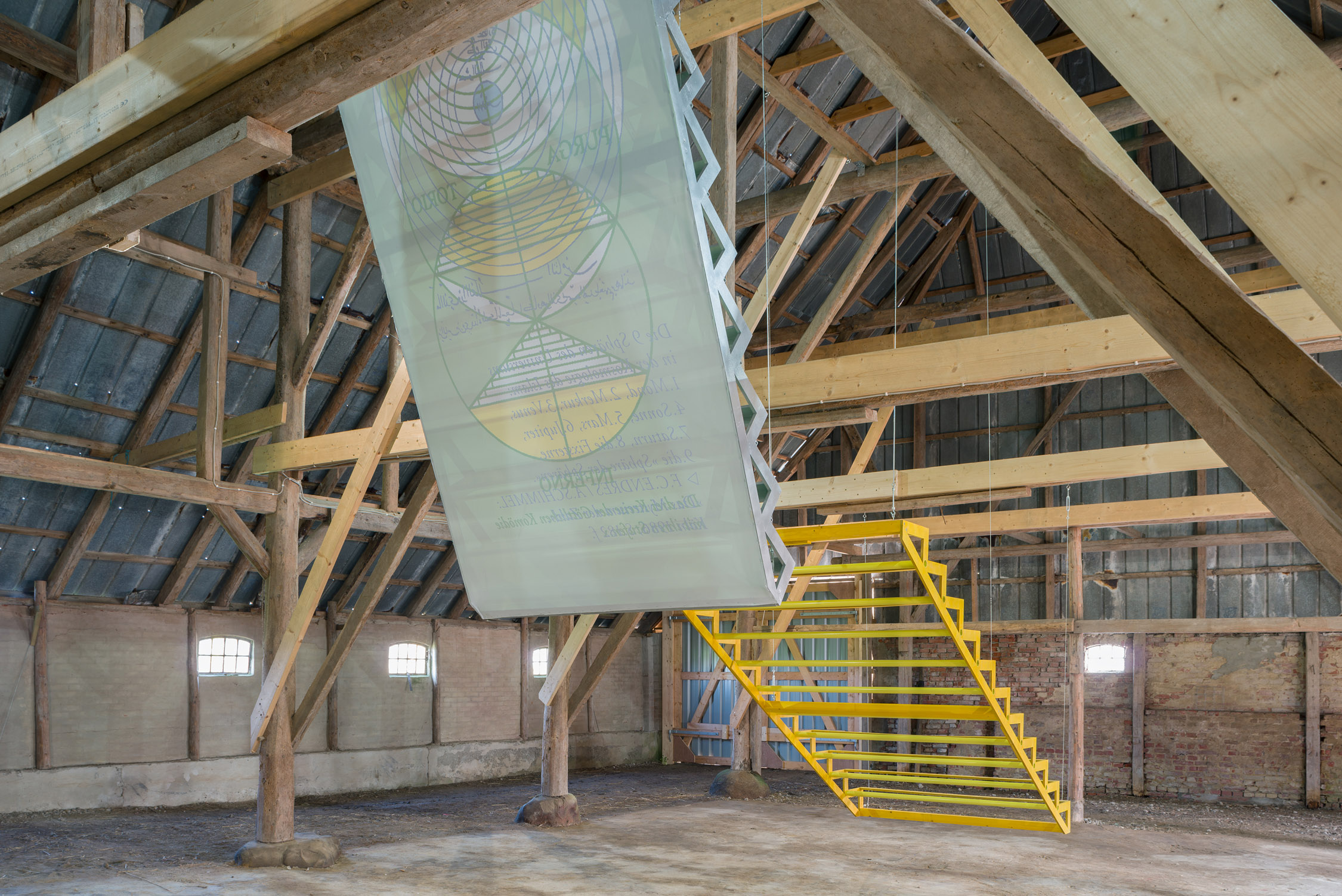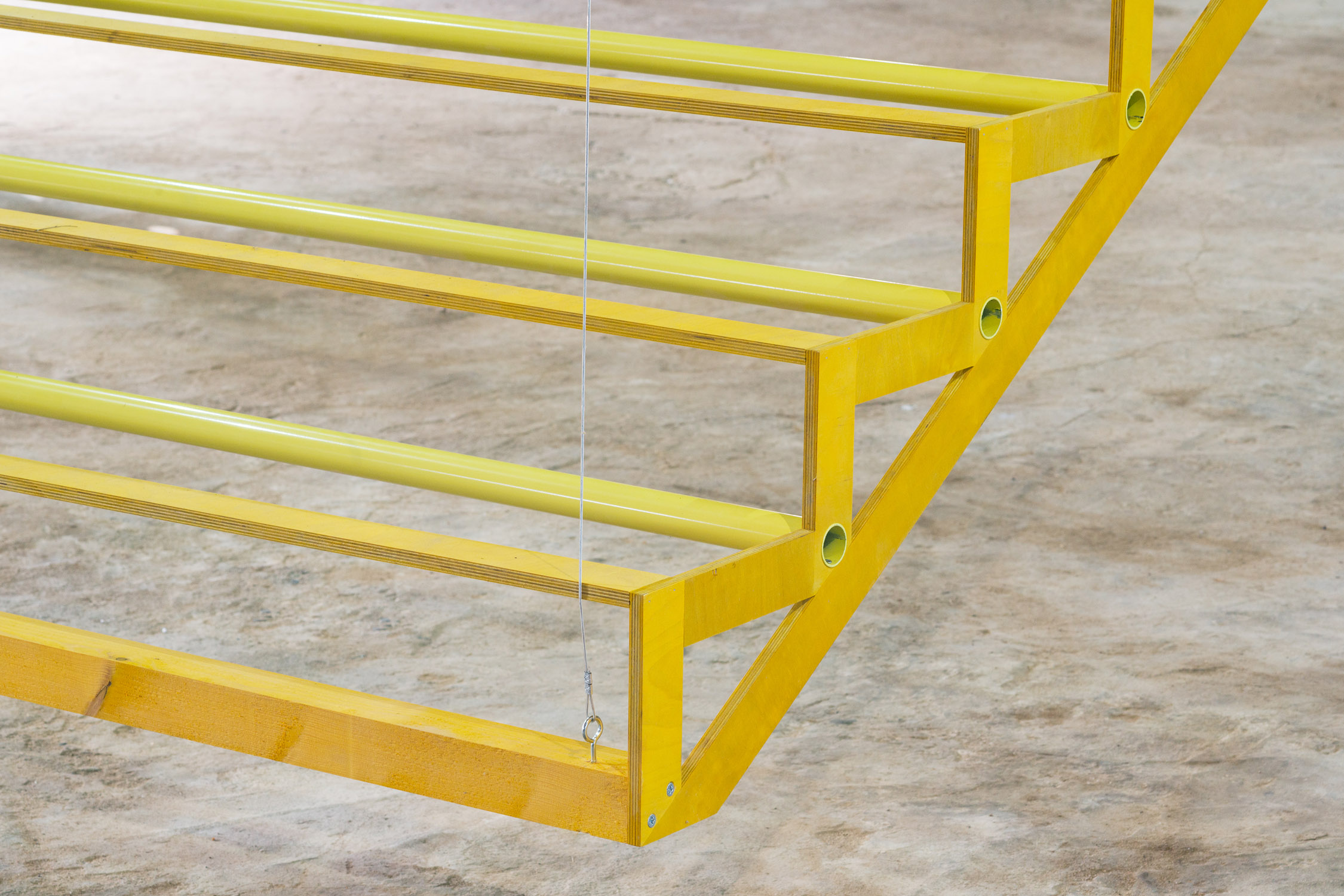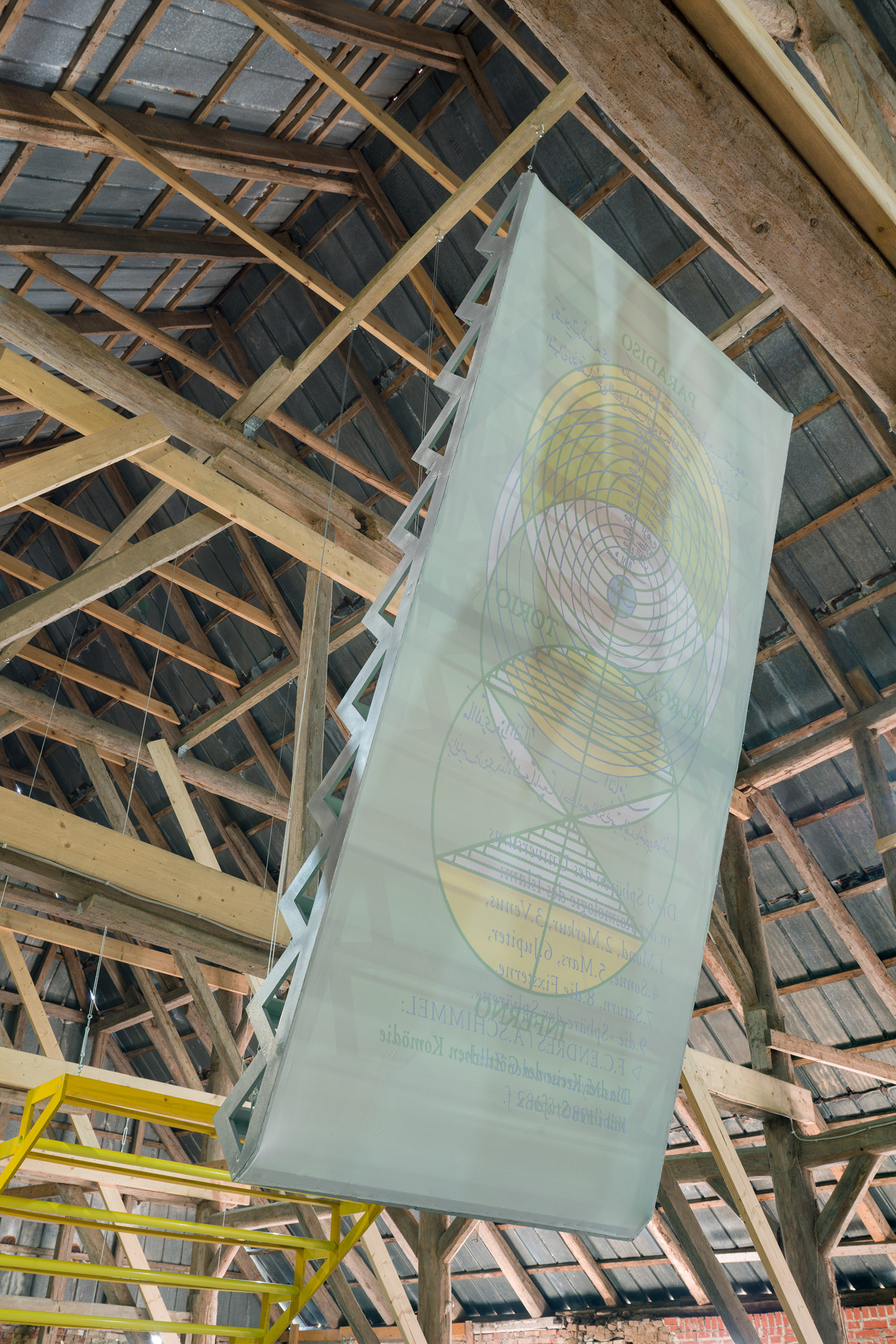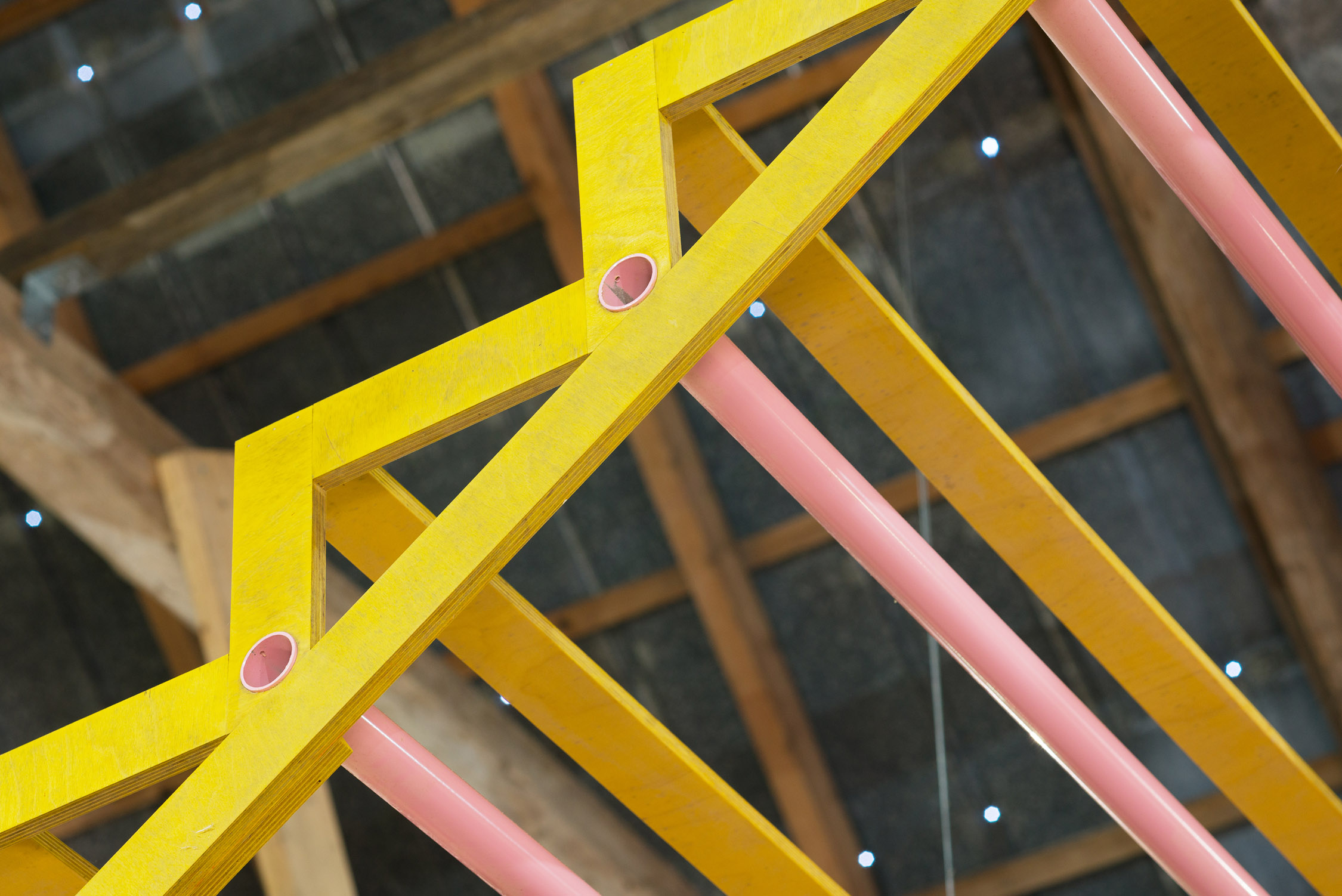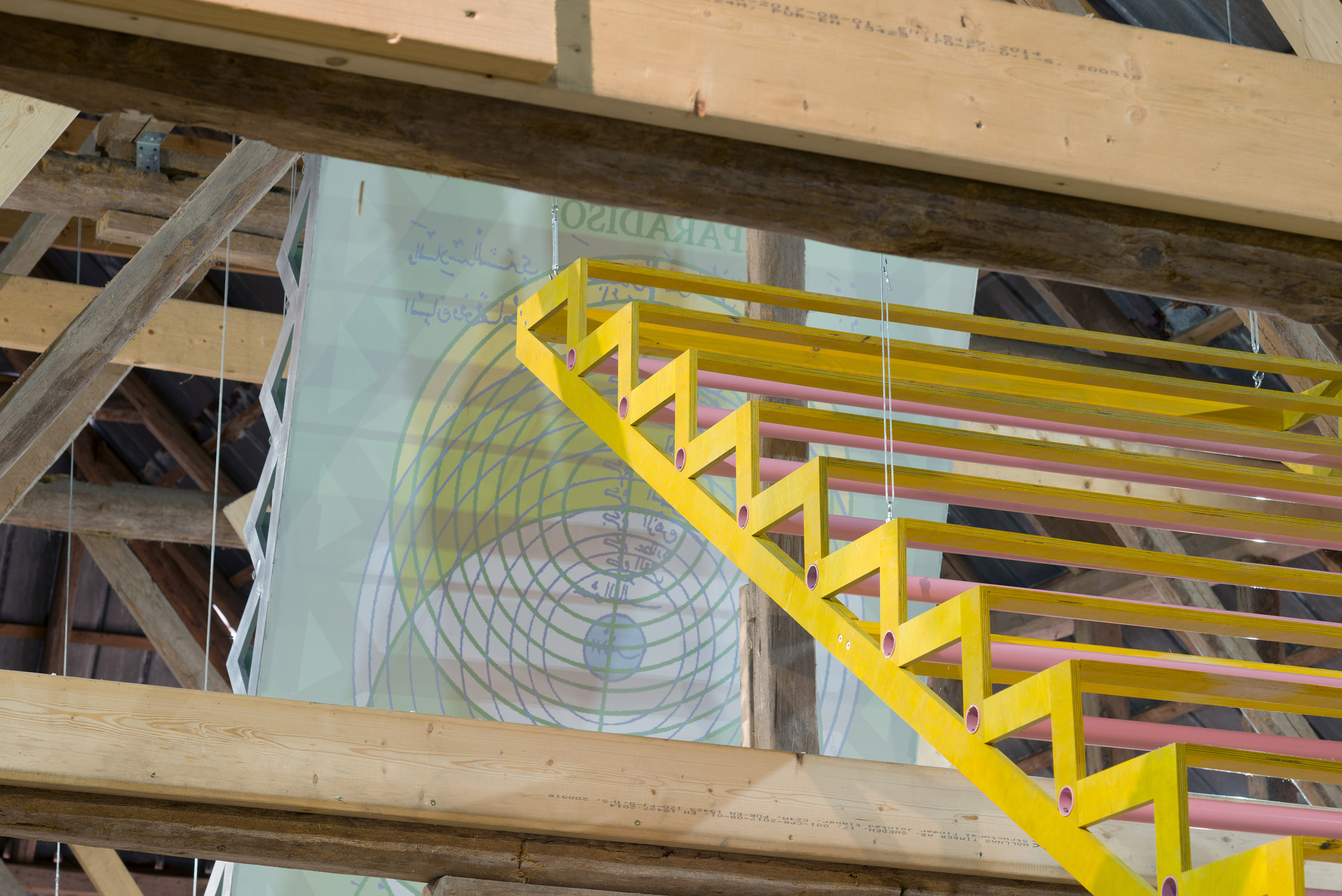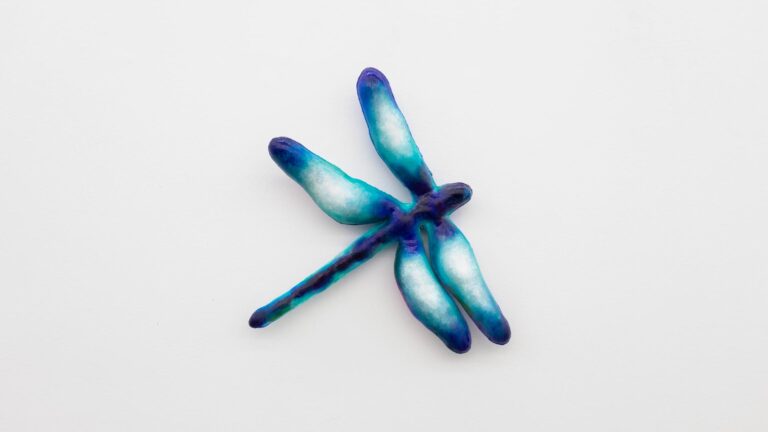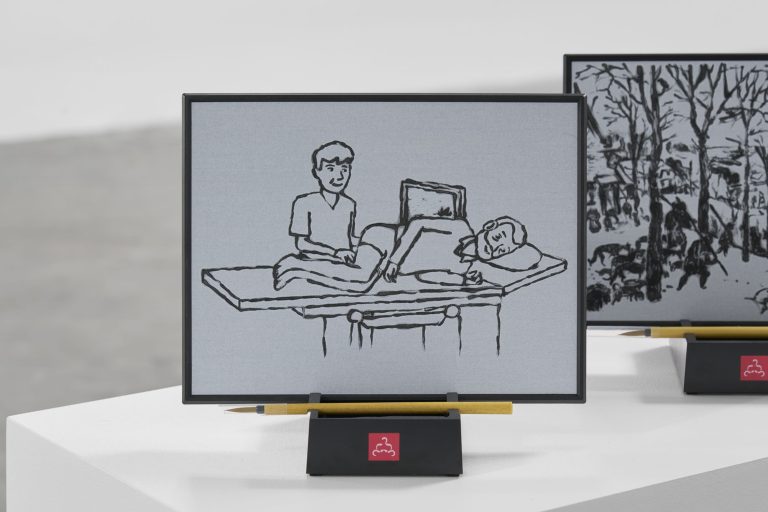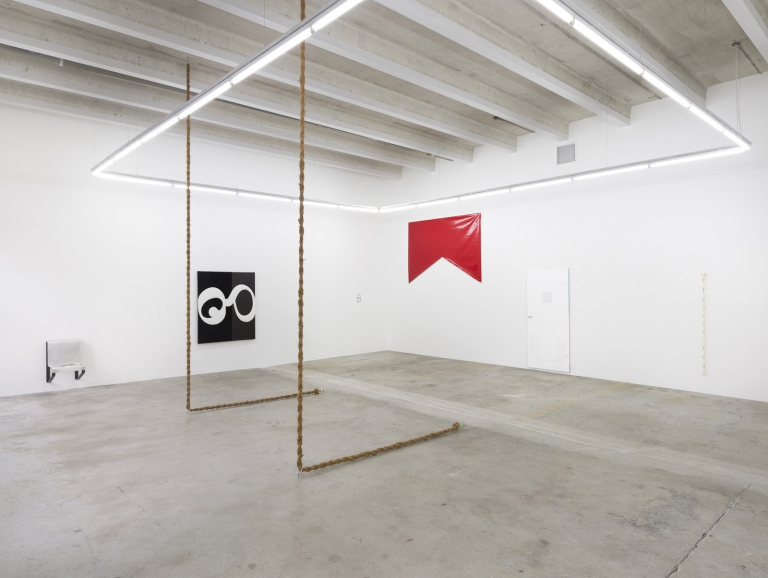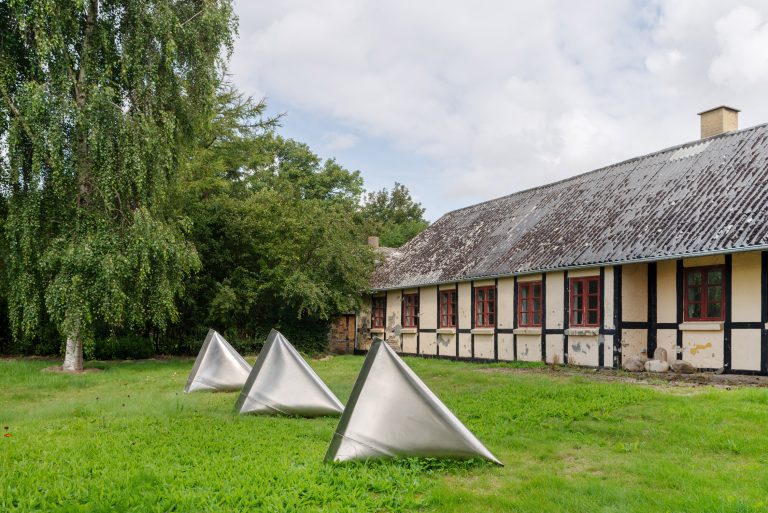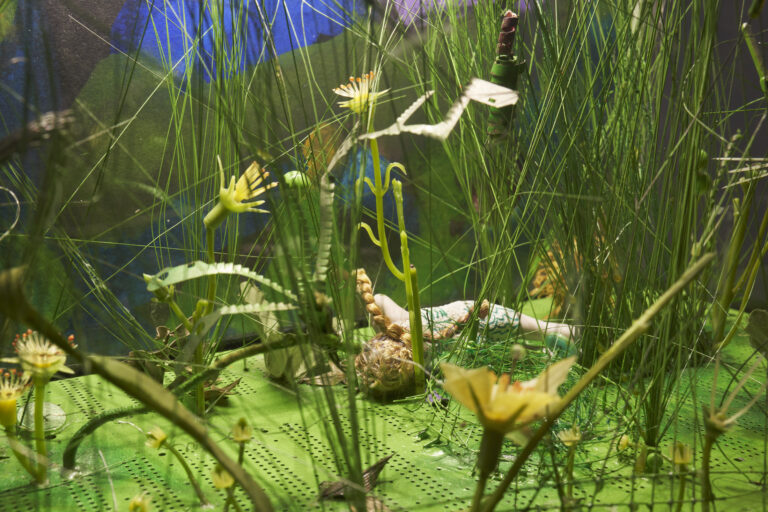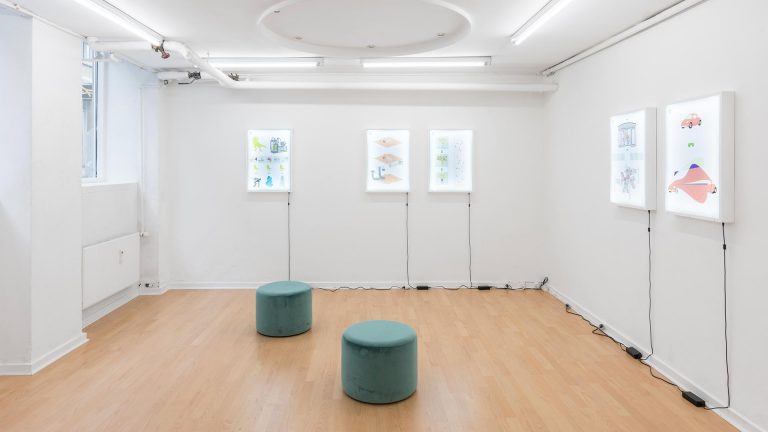Artist: Jasmin Werner
Exhibition title: Skalalogiens Skærsild
Curated by: Rasmus Søndergaard Johannsen
Venue: Kunsthal Thy, Hurup Thy, Denmark
Date: March 30 – May 26, 2024
Photography: all images copyright and courtesy of the artist and Kunsthal Thy / Photos: ©Jacob Friis-Holm Nielsen
Jasmin Werner’s exhibition Skalalogiens Skærsild (Purgatory of Scalalogy) opens at Kunsthal Thy this year at Easter.
Easter, the most important feast of the Christian church, celebrates the ascent of Jesus Christ into the realm of the dead and his resurrection; while scalalogy is the study of stairs and so the title, Skalalogiens Skærsild (Purgatory of Scalalogy) refers to scalalogy as a place of transition, but also a place of purification – a fictional place where one can be held captive – a place between worlds, halfway between above and below.
The concept of Purgatory developed rather late in the history of the Christian church, the first references appearing only in the 12th Century. It is the fictional place in the world of the dead where it is decided whether the person goes up to heaven or down to hell. There were as many different interpretations of the idea as there were interpreters: while for for a long time in Central Europe it was viewed upon as a punishing fire, other parts of Europe foregrounded the purifying and cathartic aspects.
The idea of dividing the world into above and a below is probably as old as looking at the sky and the stars themselves and the need to structure the area in between seems just as old: for example, the idea of a personal or symbolic rise or fall or the positioning of people within religious or political worldviews. For this purpose the image of the steps and stairs are often used.
Friedrich Mielke founded the research field of scalalogy in 1951, focusing the study of these structures – the stairs – their different cultural influences, their iconography, the pragmatic conditions of their forms and their rules. Jasmin Werner has been dedicated to the topic since 2016 and has subsequently developed a historical, symbolic, religious but also a very personal approach to these structures. She designs and builds sculptural stairs herself, integrates them into large-scale installations and shows them as carriers of information that go far beyond their use value.
Five of Jasmin Werner’s staircase sculptures, which were originally made for Kunstverein Hannover, are on display in Kunsthal Thy. The view through the flights of stairs is varied by creating large-scale collages on the back of some of the sculptures which address the idea of the ordering, structuring characteristics of stairs. Images that show how different cultures make use of this imagery and in which areas very different ideas of a “tiered” world order apparently overlap. She quotes Islamic cosmology, where the planetary order with nine rings on which the Moon, Mercury, Venus, etc. orbit is very similar to the division of the underworld into nine ring-shaped stages of descent in Dante’s Inferno. Interestingly, Dante begins his journey into the underworld on Good Friday, the day on which, according to Christian mythology, Jesus Christ, condemned to death, was hanged on the cross on Mount Golgotha.
Another collage on a pink background shows text passages and sketches by Lennart Kvarnström, who studied climbing behavior in the 1970s, together with a religious staircase. On a yellow background you can see a figure from antiquity climbing a ladder.
Most of the stairs we encounter are standardized, so that when we climb them we easily notice whether our own bodies also conform to the norm. Can you climb stairs with ease? Do you have to pay attention to the steps and concentrate to avoid tripping? Or maybe you even have to put in effort at every single step? In fact, our bodies and the ways we walk are so different that every person actually needs their own stairs.
The form in which Jasmin Werner’s staircase sculptures are presented breaks with the norm. Her stair sculptures hang in the room, none of which touch the floor and none of the inclines appear standard. They point out that there are different starting points for different forms of advancement. Just as every path in life, which develops step by step, begins differently. For example, it makes a big difference whether you were born in the city, where there are schools to choose from, or in the countryside, where you can’t always choose your school. It makes a difference whether you grow up in a wealthy family where you can frequent museums or concerts and travel to many different countries and cultures, or in a family that has to pay attention to every cent. It makes a difference whether your parents spent many years in school and perhaps even studied, or whether they left school as quickly as possible and can’t talk about studying but only about working. And it makes a difference whether your own parents have fled their home country to build a new life abroad, while their children are taking their first steps here.
To climb the first step you may have to stretch far or even jump and risk a fall. Some stairs require abseiling or using a ladder. But where do you get the equipment, can you use it alone or do you need training or perhaps the help of another person? Some stairs will remain inaccessible no matter how hard you try. And even if you have managed to climb the first step, the ascent is still not certain, because the different angles of the steps make every step a challenge.
Jasmin Werner’s stairs invite you to look again at stairs and their special features and not to take them for granted. They ask us to pay to attention to the movement sequences required of the body, allowing you to think about your own personal advancements, the challenges that come with them and the efforts that they require; showing just how much potential there can be in a first step.
Marina Rüdiger and Rasmus Søndergaard Johannsen
Jasmin Werner studied at HFG Karlsruhe, Gerrit Rietveld Academie, Amsterdam and completed her studies at Städelschule University of Fine Arts, Frankfurt am Main in 2016 as a master student of Peter Fischli. In 2017 she was a scholarship holder at the National Museum of Modern and Contemporary Art Seoul. In 2022 she received the Callie’s Studio residency in Berlin and the KKV Workshop residency in Malmö. Her work has been shown, among others, at Kunstverein Braunschweig, Bärenzwinger (Berlin), Museum Folkwang (Essen), Damien & The Love Guru (Brussels), Galerie Guido W. Baudach (Berlin), DuMont Kunsthalle (Cologne) and Bundeskunsthalle (Bonn).

